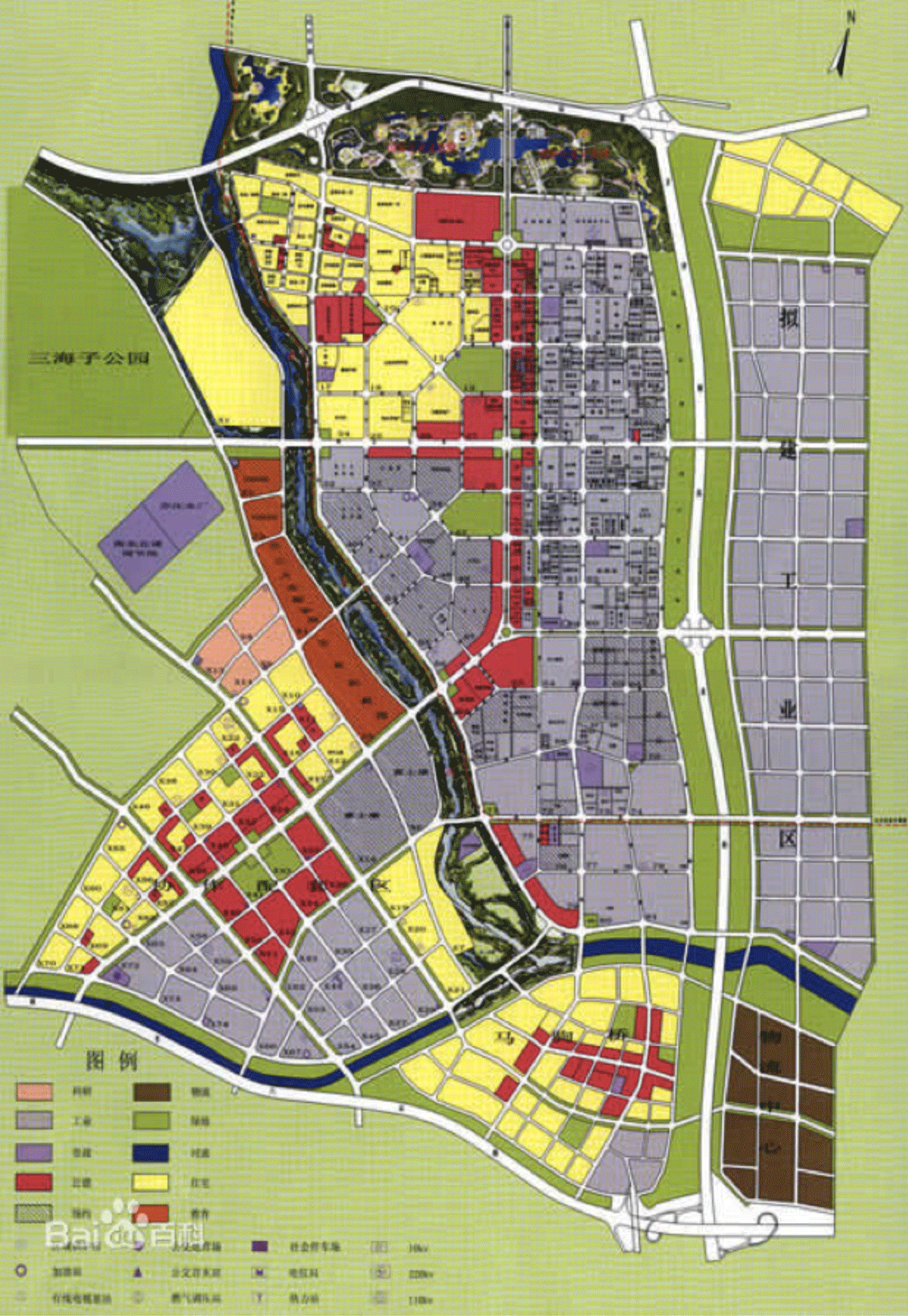介绍北京市经济技术开发区 Introduction to Beijing Economic-technological Development Area (BDA)
BDA is the State-class development zone under the administration and sponsorship by Beijing Municipal Government in southeast corner of the greater Beijing vicinity between 5th and 6th Ring road. It started in 1992, and since then PETDA has developed and administrated 6 industrial-technology parks. The size has increased from its original 46.9 sq km to 150 sq km (1sqkm=247acre), with a population of 700,000. The following map shows the fully-developed BDA core.
BDA hosted 4,800+ current resident enterprises, among them 108 are World Top-500 international enterprises. The Top-10 residential enterprises are ones achieving annual revenue above CNY50 billion (CNY1.00=USD0.16) each. Meanwhile BDA successfully nurtured 10+ China domestic enterprises, that have grown above RMB10 billion in annual revenues until now. With one trillion CNY of total revenue of the Area (2013), BDA’s economical achievement is as well measured in the rapid growth, featuring: GDP 15%; Industrial 20%; tax income 15%; and investment arriving the Area 20%, of which tangible investment achieves CNY 37 billion (2014 target).
There are 4 main industrial clusters that have been strategically inhabited in the Area: (1) electronics-information, (2) biotechnology-pharmaceutical, (3) high-tech capital equipment design and manufacture, and (4) automobile manufacturing.
Paired with the Zhongguancun Science Park at the northwest corner of Beijing, both serve as main technology and manufacture force of China’s Capital. On February 26, 2013, when President Xi led a Central Government delegation to inspect the Beijing municipal administration, the central government gave BDA a new assignment: to transfer the manufacture-center into a science and technology center; that will require the production and trade of intellectual properties and technologies. For this renewed mission, the BDA is refocusing onto international high-tech and new products. To develop them further locally, making them licensable and transferable to Chinese manufacturers. One of Dr. Liang’s first-hand initiatives is the current establishing of the Pheromonicin Institute and Pheromonicin Fund, dedicated to participating in the world-class innovation and platform technology. This has already been achieved in Beijing, with 20+ candidates with drug designs in high-profile and critically guided bacteriocin applications. At the same time, they are investing in development of 5G mobile communication algorithms and standards, which has been in various research stages in US.

